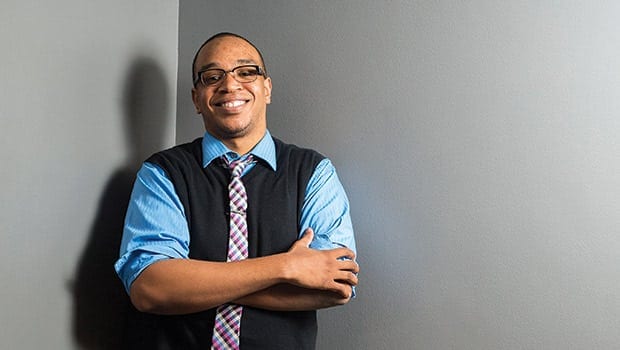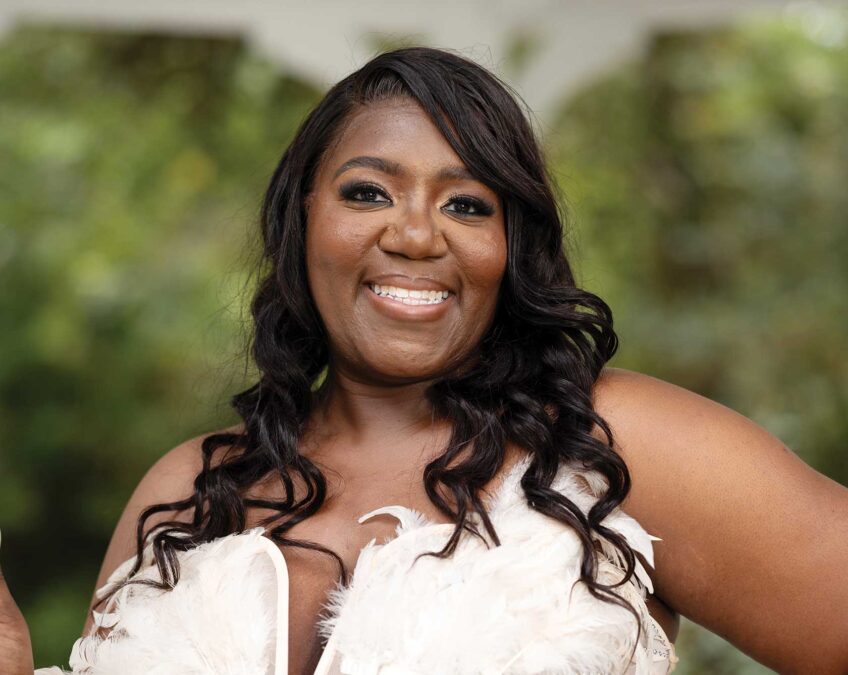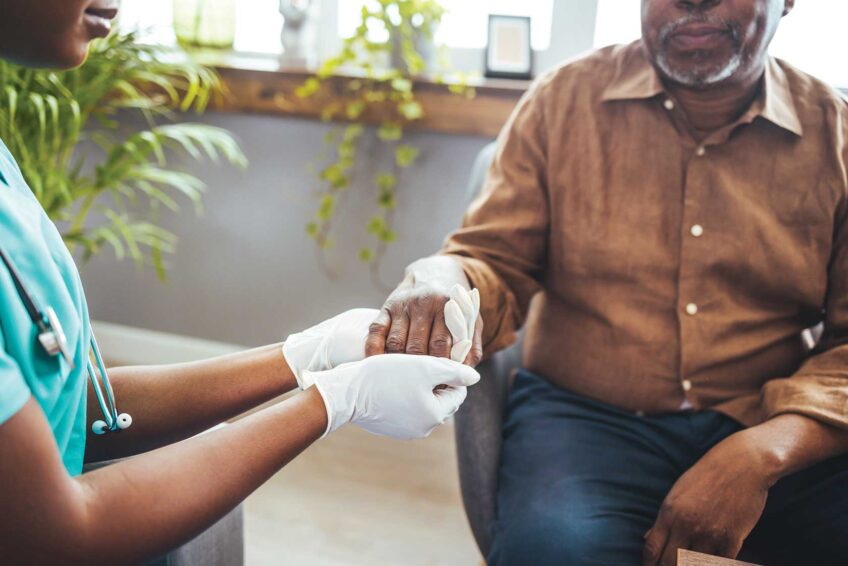Suicide: A tragic decision
With treatment suicide is often preventable

When Jordan Burnham was 18, he reached the conclusion that his family would be better off without him. He jumped from his ninth floor bedroom window.
Burnham landed on his left side and fractured the bones in his leg, thigh, pelvis, wrist and jaw. He was hospitalized for five months and just recently had his last surgery — seven years after the event.
The jump from his bedroom window was a culmination of events and problems that could be traced back to the third grade. Burnham said he would smile and joke and make people laugh. That allowed him to fit in but it also allowed him to hide the depression lurking within. He noticed that he would still be upset about something that happened months ago. “I shouldn’t still feel this way,” he thought. Looking back, he realizes he had no coping skills.
What puts a person at risk for suicide?
- Depression or other mental health disorders
- Substance abuse
- Family history of mental disorder or substance abuse
- Family violence, including physical or sexual abuse
- Firearms in the home
- Family history of suicide
- Exposure to suicide of family members, peers or celebrities
- Chronic illness or pain
- Gender — occurs in almost four times as many males as females
- Age — more common in people under the age of 24 and 65 and older
- Being the victim of bullying
- Previous attempts
- Race — more common in American Indians and whites, but the number is increasing among blacks
Suicide is not a normal response to these risks and can often be prevented by appropriate treatment for the mental or substance abuse disorder.
High school was a challenge. He was the only black person and felt the pressure that he had to be better than most — almost perfect. “I felt I had the weight of the African American community on my shoulders,” he explained. He began to drink. In hindsight he said it served as a coping mechanism. Back then, he thought it was just the culture of high school.
The tipping point came at the age of 16 when he failed his driving test. When a stop sign tripped him up, he flew into a rage, which resulted in a referral to a therapist.
It was then that Burnham was diagnosed with depression, but he did not take the sessions with the therapist seriously. “I thought I would go two times and move on,” he said. “I did not see treatment as a process.” He was prescribed medications, but took them haphazardly.
Junior year was not a good one for Burnham. Things really began to spiral downward. He drank and partied more than he should. Images of college were slowly retreating. Thoughts of suicide began to creep in. When he verbalized these thoughts his family called the police who transported him to a psychiatric hospital.
“I did not know what to expect,” Burnham said. But life in the hospital was easier than on the outside. It was a safe environment, he explained.
After discharge he continued to drink — even though he was on antidepressants. The low point came during his senior year when the party he gave was busted by the police. His friends who attended were suspended from school athletic teams. Burnham said he felt he let them down. He let his parents down. When his father discovered the stash of alcohol in the trunk of his car, his thoughts changed from “why am I here?” to “I don’t want to be here anymore.”
He called his girlfriend and said “I have to go.”
Suicide in African Americans
Pay attention to the warning signs!
- Threatening to hurt or kill oneself or talking about wanting to hurt or kill oneself
- Looking for ways to kill oneself by seeking access to firearms, available pills or other means
- Talking or writing about death, dying or suicide
- Feeling hopeless
- Feeling rage or uncontrolled anger or seeking revenge
- Acting reckless or engaging in risky activities — seemingly without thinking
- Feeling trapped — like there’s no way out
- Increasing alcohol or drug use
- Withdrawing from friends, family and society
- Feeling anxious, agitated or unable to sleep or sleeping all the time
- Experiencing dramatic mood changes
- Giving away belongings or getting affairs in order
- Seeing no reason for living or having no sense of purpose in life
Source: Substance Abuse and Mental Health Services Administration (SAMHSA).
There’s a perception that African Americans do not commit suicide. It has always been considered a white person’s affliction. To a certain extent, that is true. In figures from the 2013 National Vital Statistics System, suicide is the 10th leading cause of death in whites, but does not show up in even the top 15 causes of deaths in blacks.
When you break the figures down by age, however, another picture emerges. In all age groups the number and percentage of deaths from suicide is greater in whites, but between the ages of 10 and 14, it is the third leading cause of death in both groups. After that the trends differ. Suicide jumps to the number 2 killer in whites from age 15 to 34, and remains in the number 3 position in blacks up to the age of 24.
The difference is the age at which suicide hits the hardest. In blacks, it is more common between the ages of 20 and 44 — the peak earning years. In whites it is more common in the fifth decade.
These numbers, however, may change. In a May 2015 study published in the May JAMA Pediatrics, researchers found that suicide rates among elementary-aged children between five and eleven increased significantly in blacks from 1993 to 2012, while the rates fell in whites.
There are many possible causes for the uptick in suicides among black youth. Easy access to firearms and exposure to trauma have an impact. Most importantly, however, is failure to receive treatment for depression, anxiety and other mental illnesses. Almost 100 percent of suicides occur among people with a history of mental illness.
A closer look at suicide
Homicides pervade the daily news and top the headlines of many local newspapers while suicides — unless they involve celebrities — do not make the news. This lopsided reporting gives the impression that the number of homicides far outweighs the number of suicides. Not so. In Massachusetts suicides are almost five times more common than homicides. In the most recent data from Massachusetts’ Injury Surveillance Program, in 2012 the Commonwealth experienced 624 suicides and 135 homicides.
The number pales beside attempted suicides. In fiscal year 2013 there were over 4,200 hospital discharges for self-inflicted injuries and almost 7,200 emergency department visits. The majority of suicides are committed by males, but females make more attempts. The most common age for suicide in the Commonwealth is 45 to 64. While males use firearms and hanging, females resort to hanging and overdoses.
If Burnham could take that leap back he would. He said he gets it now. “Learn to cope and deal with problems,” he advised. Jordan is now a mental health advocate. He works with Active Minds, the leading non-profit organization that aims to remove the stigma of mental illnesses and encourage open conversations on college campuses nationwide.

Author: Photo courtesy of Joe FeasterJoseph D. Feaster Jr. talks openly about the suicide of his son in hopes of bringing mental illness to the forefront in the African American community.
Burnham offers advice. “It’s okay to ask for help. Don’t worry about stigma,” he said.
The families that remain
Some people feel ashamed or embarrassed when a mental illness strikes their family. They sweep it under the rug. It’s best not to talk about it, they rationalize. Not Joseph Feaster Jr. “This is my ministry,” the 65-year-old lawyer explained. When his only son took his life five years ago, Feaster came out fighting. “There’s not one scintilla of stigma associated with this,” he explained.
What should you do if you think someone is thinking of suicide?
Take the threat seriously
Let the person know you care
Ask questions such as:
- Are you thinking about killing yourself?
- Do you think you might hurt yourself today?
- Have you thought of ways that you might hurt yourself?
- Do you have pills or weapons in the house?
Do not leave him or her alone
Remove potential tools for suicide
Tell him or her that you will get help
Call 911 or go to the nearest emergency room
Call 800-273-TALK — the National Suicide Prevention Lifeline
Joseph E. Feaster III was a smart and likeable kid. He excelled in school — both in grades and sports. As far as his father could tell, there was no tell-tale sign that a serious mental disorder was about to erupt. He headed off to the University of Pittsburgh to study film. All seemed well until the summer after his freshman year.
Feaster III had his first “episode” when he started rambling incoherently, then lunged at his father. That resulted in a short stay in the hospital to stabilize him. The father evoked Section 12, which allows involuntary hospitalization of a person who is a danger to him or herself or others.
Upon discharge, Feaster III denied he had a problem and refused to take his meds. Oddly, even without prescription medication, he seemed fine for several years, according to his father. Actually, his family later discovered that he was self-medicating with alcohol and gingko, an herb often used to treat depression.
Feaster III eventually completed his education at UMass Boston and was accepted into the master’s degree program in the school of Business and Entrepreneurship at Northeastern University. While on a conference call with his class mates, one fellow student, a trained EMT, was concerned about Feaster’s erratic conversation. He called 911.
Feaster jumped out of a third-story window brandishing a Samurai sword. He was tackled by the police and readmitted to the hospital. It was at this point that Feaster III acknowledged he had a problem and promised to take his meds.
That proved to be an idle promise.
Seven months after his discharge, he jumped from the same window but did not survive. He was 27 years old.
Although his life was over, in his death he gave life to others. The family donated several of his organs.
Feaster Jr. is pragmatic. “This is a disease of the brain,” he explained. “Why would you treat a person with mental illness any differently from anyone else? It’s nothing that I did or Joseph did.”







